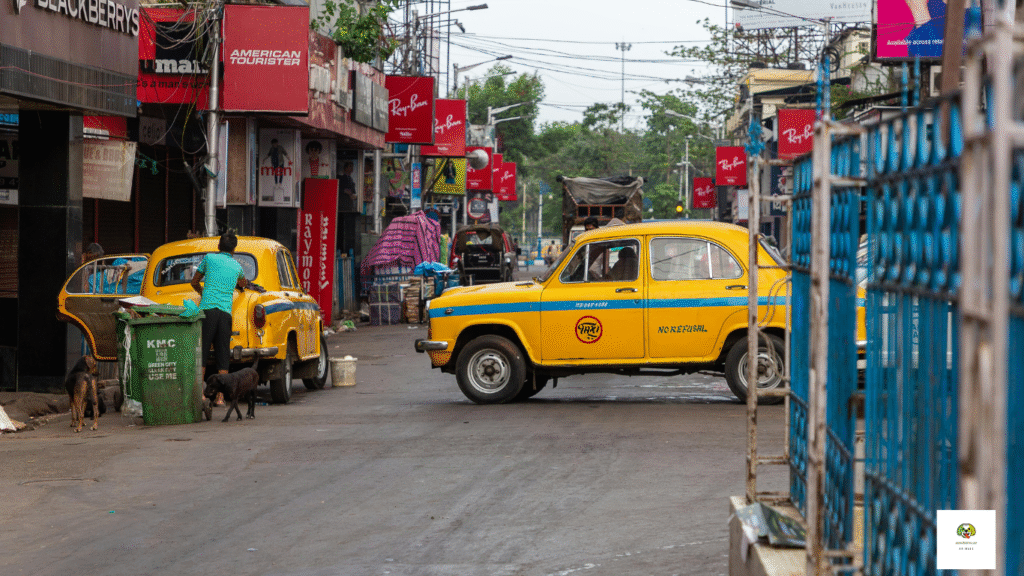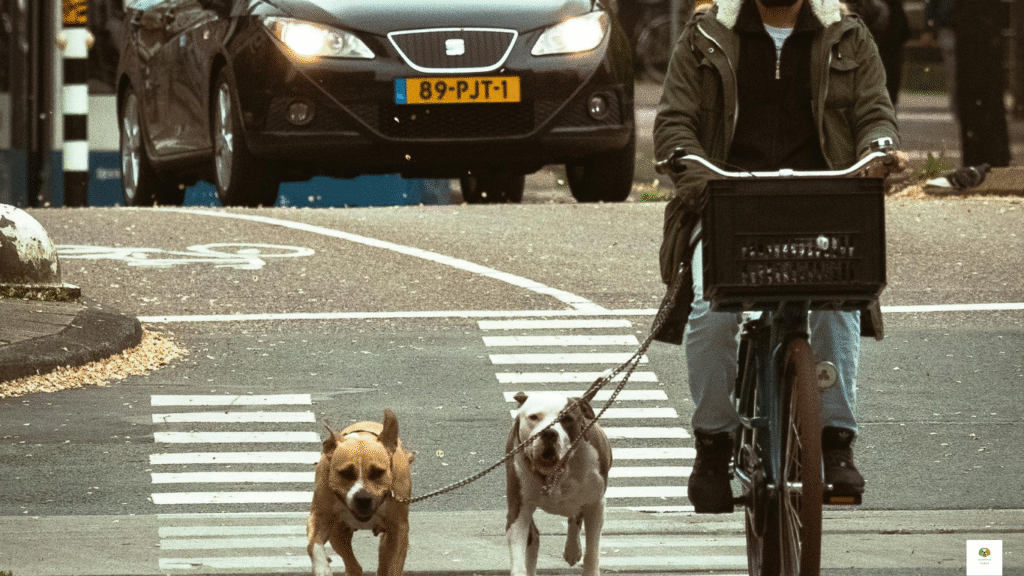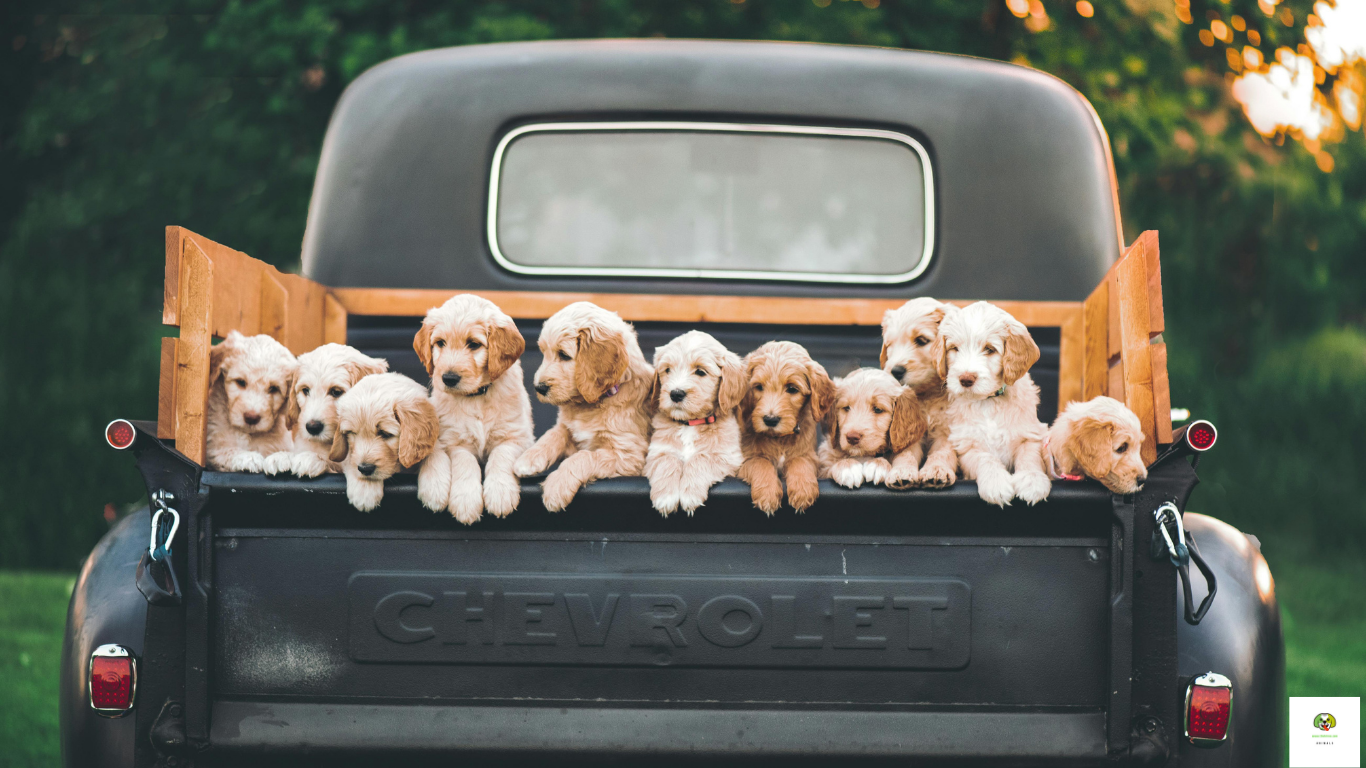You may be wondering if you can take your dog along on public transport services like buses or light rail. The answer is simple — yes, you can, but you need to be aware of certain rules and regulations.
We explain here in simple language everything you need to know about taking dog on public transportation. Every city or state has a different public transport policy — some allow dogs completely, some only when they are in a carrier bag. Some places may charge an extra fare, while some allow small dogs to travel for free.
So if you are planning a trip with your beloved pet, it is best to gather information beforehand. This will not only help you travel without any hassle, but your dog will also not face any problems.
Content
Before You Begin: Preparation is the Key to Success
No matter how exciting the idea of traveling with your beloved dog on a public bus, metro or local train may be, going off unprepared can be a recipe for trouble. The first step to a smooth and safe journey is well-informed and prepared. Remember, every city, every state and even individual transport companies (e.g. Delhi Metro, Mumbai local, city buses) have their own specific rules.
Checking these thoroughly first is a must. Also keep in mind the type and size of your dog – most public transport only allows small dogs, and certain breeds may be banned. Don’t forget the paperwork: vaccination certificates (especially for rabies), licenses and sometimes fresh health certificates are mandatory.
Without these, it is difficult to get entry. Also, having the right essentials makes travelling easier – a sturdy leash or harness, a standard muzzle, pads to soak up any mess if they happen to make a mistake, and a suitable dog bag or carrier (for smaller dogs), as well as water and snacks.
A little pre-planning and packing can make the journey stress-free and enjoyable for both of you. Remember, good preparation is the key to making your public transport journey a success.
Choosing a ride: Which transport is dog-friendly?

Want to travel with your beloved dog on city streets or between cities? Then it’s important to be careful when choosing public transport. Each option has its own rules, knowing which will help you travel stress-free:
- Metro/local trains: These are usually the ones with the strictest rules. In most places, dogs are allowed only in a safe, sturdy pet carrier, and they have to be kept on the floor. In some cities, dogs may be completely banned during morning or evening peak hours. Always check local rules first.
- Buses (urban/interurban): Rules depend on the company or the state. In most cases, a muzzle and short leash are mandatory. The dog must sit on your lap or on the floor next to the seat. Getting the explicit permission of the driver or conductor is the first step, especially in AC buses. Some inter-city buses do not allow pets.
- Auto-rickshaws: This is entirely up to the personal consent of the driver. Many drivers are reluctant to take dogs. Ask clearly before boarding and only board if he says “yes”. Negotiate the fare beforehand, as dogs are often charged extra. It is safer to have the dog sit on your lap or seat.
- Taxi/cab (app-based or regular): This can often be the most convenient option. Check the policies of app-based cabs (e.g. Uber, Ola) – some offer ‘pet-friendly’ cabs. Call the driver immediately after confirmation to let him know that you are with your dog. This gives them a chance to refuse or agree. It is best to keep the dog in a carrier or seated in the back seat with a leash and muzzle. Even in a regular taxi, take the driver’s prior permission.
- Rail (long distance – IRCTC): Indian Railways allows dogs only in First AC (1AC) coaches. The process is quite strict: Pre-booking is a must, Vets certificate and ticket are required, and Dog must be within the weight limit (often up to 60 kg). It takes a lot of planning and paperwork.
Remember: No matter what mode of transport you choose, Always ask the driver/officer for permission first, keep your dog under full control (leash and muzzle required), look out for its Safety and Comfort, and Respect the comfort of other passengers. With a little preparation and awareness, you and your fur-baby can have a safe and enjoyable journey!
Mandatory rules: Know what you must do
Travelling with your beloved dog in a bus, metro or train can be convenient, but it also brings huge responsibility. To ensure the safety, comfort of other passengers and the well-being of your own dog, it is very important to follow some mandatory rules.
These rules will not only make your journey comfortable, but will also help in maintaining a positive attitude towards pets. So, let’s know what things to take special care of while taking a dog on public transport:
While travelling with your dog in public transport, it is mandatory to follow some basic rules so that everyone’s journey is safe and pleasant. The first rule is correct use of leash and harness – always hold it tight and short so that the dog does not suddenly run away or disturb others.
Another important rule is Muzzles – most public transport requires large or certain breeds of dogs to wear muzzles. For small dogs, use a carrier or bag that is sturdy, ventilated and keep the dog on the floor or in your lap during the trip. Clean-up responsibility is entirely yours – carry and use items (e.g. paper towels, pop-up bags) to quickly clean up any mess or urine the dog leaves.
Finally, keep the dog under control – keep him at your feet or in your lap, never let him climb onto the seat. By following these simple rules, you can make traveling better for everyone.
Behaviour while travelling: yours and your dog’s
Taking dogs on public transportation can be a responsible experience. Its success depends entirely on your and your fur baby’s behavior. First of all, it is very important to keep the dog calm. A restless or nervous dog can not only make your trip difficult but also cause trouble for other passengers.
If necessary, practice a little before the trip or keep them occupied with a favorite toy.Second, don’t forget to respect other passengers. Remember, some people may be afraid of dogs or have allergies. So, sit at a sufficient distance from them, keep your dog close to you at all times, and don’t invade anyone’s personal space. Third, be sensible in choosing a seat.
Try to travel during less crowded times (such as off-peak hours). When boarding the vehicle, choose a seat in a quiet corner, away from the doors so that your dog is not disturbed by the crowd or movement. Fourth, be alert throughout the journey. Keep an eye on your dog’s body language and surroundings. Be able to react quickly in case of sudden braking or increased crowds.
Last but not least, inform the driver or conductor immediately after boarding that you have a pet dog with you. This is not only following the rules but will also help them make safe arrangements. These small measures can make Taking Dog on Public Transportation safe, comfortable, and enjoyable for everyone.
Advice for special situations
Travelling with your beloved dog on public transport can be a bit challenging, especially in certain circumstances. Here are some important tips:

- First time travel: Start with short journeys to make the dog relaxed. Go just a couple of stops the first few times. During this time, stay calm, talk to him lovingly and reward him with treats for good behaviour. This will help him adjust to the noisy and crowded environment of the bus/metro.
- Anxious or scared dog: If your dog gets very anxious or scared on public transport, it is better to seek help from a professional dog trainer. They can teach special techniques. Sometimes, in cases of severe anxiety, consult a vet before travelling. They may suggest safe calming aids or other solutions, but never self-medicate.
- Encounters with other animals: There may be other dogs or other animals on the bus or train. Always try to maintain a safe distance. Keep your dog under tight control (use a short leash/harness) and do not allow him to approach other animals unless both parties are clearly comfortable.
- Emergencies: Always carry a few extra poop bags, paper napkins and a small cloth. If the dog vomits or pees, clean up immediately. In case of a fight with another dog, try to stay calm. Immediately move your dog to a safe distance (by picking him up or getting in the way). Never try to separate fighting dogs with bare hands. Keep an eye on your dog’s body language during the trip and if he looks very upset, get off at the next stop.
By taking these precautions, both you and your furbaby can have a safe and pleasant travel experience.
Cordial with other passengers and staff
Confidence and thoughtfulness make travelling by bus, metro, or train with your dog much smoother. Remember, you’re sharing a space with others. Start with courtesy strictly follow local rules like using muzzles, leashes, and having required permits.
Actively prioritise the comfort and safety of fellow passengers, especially those nervous around dogs or with allergies. This builds a positive impression of responsible pet owners. Expect questions about your dog – answer them patiently and kindly, sharing information calmly.
Always respect and promptly follow instructions from transport staff; their priority is everyone’s safety and smooth journeys. These simple actions make the trip pleasant for all and help build wider acceptance of pets on public transport. A bit of consideration goes a long way!
Conclusion: For a safe and enjoyable journey
Travelling on public transport with your beloved dog can be a completely possible and enjoyable experience, provided you make complete preparation and raise your awareness. It’s not just about the ticket or the carrier, but about understanding your pet’s needs (water, breaks), its temperament and the rules of travel.

Always remember that you are in a public place – respect for other passengers and full responsibility for your pet is a must. This means keeping the dog under control, calm, and not causing trouble or inconvenience to anyone. Your awareness and consideration will not only make your journey easier, but they will also be a significant contribution to making public transport more pet-friendly.
When more people do this responsibly, acceptance will increase for all. With a little effort and understanding, travelling on the bus, metro or train can become safe and pleasant for both you and your four-legged friend!
Read Other Also
Why does my dog hate me – 10 Possible Reasons and Solutions
Top 10 best dog breeds for protection and family 2025
Best Dog Food for Humans to Eat – Safe & Tasty Options You Won’t Believe
Why are Akita Dogs Dangerous? The Shocking Truth You Need to Know!
FAQ
Absolutely! Rules for bringing dogs on public transport vary greatly by location and service provider.
Usually:Small dogs in secure carriers are often allowed. Sometimes: Larger dogs may be permitted during off-peak hours, possibly muzzled or leashed. Always:Check the specific rules for your local bus, train, subway, or tram service before you travel. Be courteous: Keep your dog controlled and ensure it doesn’t disturb others.
Always verify your local transport authority’s pet policy first!
Here’s how to travel with your dog without a car, easily:
1. Check Rules: Consider pet policies before using buses, trains, planes, or taxis/rideshares (like Uber Pet). Rules vary hugely!
2. Use a Carrier: For smaller dogs, a secure, ventilated carrier is often required on transit and welcomed elsewhere. Train them to love it!
3. Leash & Harness: Keep your dog on a short leash and a well-fitting harness for safety and control in crowds or new places.
4. Walk & Explore: For shorter trips, walking is perfect! Use a comfy harness and bring water. Consider a pet backpack for tiny pups if needed.
5. Plan Ahead: Find dog-friendly routes, stations, parks for breaks, and bring water, treats, poop bags, and a travel bowl.
Be prepared, know the rules, and enjoy the adventure together!
Most trains allow dogs, but with conditions:
Small dogs usually travel free or cheaply in secure, closed carriers (on your lap/floor). Size limits vary, but carriers must typically fit under your seat.
Larger dogs often require a leash and muzzle. You’ll usually need a separate dog ticket (sometimes half-price) and must keep them at your feet.
Always check specific rules with your train operator before travelling. Advance notice or booking might be needed for larger dogs. Restrictions can apply during peak hours.
Generally, no, you cannot buy a separate airplane seat for your pet dog. Here’s why:
1. Safety Rules:Aviation safety regulations typically require pets to be securely contained during flight.
2. Airline Policies: Almost all airlines mandate that pets traveling in the cabin must stay in an airline-approved carrier that fits under the seat in front of you for the entire flight.
3. Exception – Service Dogs: Properly documented service dogs usually travel in the cabin at your feet for free, not in a separate seat.
Always check your specific airline’s pet policy well before booking, as rules vary.


1 thought on “Everything You Need to Know About Taking Dog on Public Transportation – Tips, Rules & Must-Know Advice”